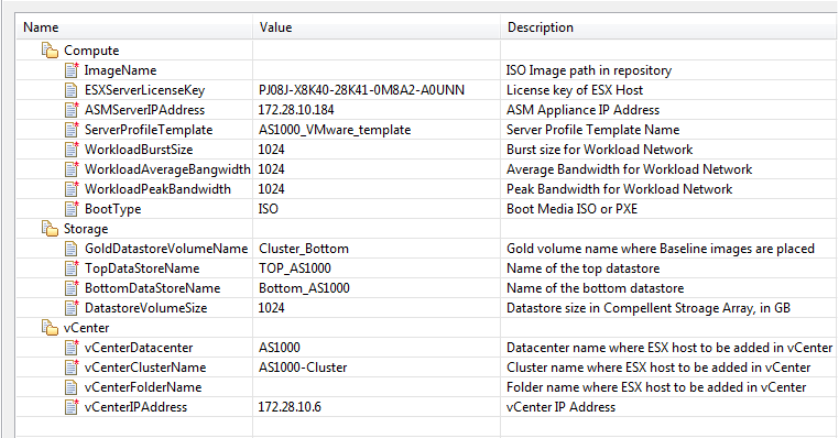Solution Guide
Table Of Contents
- Introduction to the Active System 1000 Solution
- Audience
- Support
- Technical Documentation
- Overview
- Active System 1000-Supported Configurations
- Active System Manager Deployment
- Deployment Options
- Deployment Prerequisites
- Deploying OVF
- Changing Key Access Credentials
- Assigning IP Address to the Active System Manager
- Accessing the Active System Manager Web Client for the First Time
- Adding Additional Licenses
- Configuring Active System Manager Services
- Installing the Active System Manager Client
- Active System Manager Setup
- User and Group Management
- Discovering Active System 1000 Components
- Software Repositories in Active System Manager Appliance
- Updating Repository Elements for ISO Bootable Images
- Updating Repository Elements for IOA Switch configuration and Images
- Updating Repository Elements for Brocade Firmware Repository
- Updating Repository Elements for Brocade Switch Configuration
- Updating Repository Elements for ToR Switch Configurations and Images
- Updating Repository Elements for VMware Baseline Images
- Configuring Networks
- Physical Templates and Orchestration
- Workload Provisioning Using Logical Templates
- Operation Center View—Administrative Operations
- Dashboard Reports
- Resource Allocation by Sessions Report
- Resource Allocation by Hosts Report
- Resource Allocation by Groups Report
- Top Ten Resource Allocation Report
- Top Ten Resource Utilization Report
- VM Utilization by Session Report
- Host Utilization (Consolidated) Report
- Cluster Utilization (Consolidated) Report
- Storage Utilization (Consolidated) Report
- CPU and Memory Utilization Showback Report
- Appendix A—Deployment Activities
- Appendix B—Build of Materials
- Appendix C—Firmware and Software Base Lineup
- Appendix E—Adding New ESXi ISO Images
- Appendix G— Planning Worksheet
- Appendix I—FAQs

94
Appendix B—Build of Materials. Images and firmware versions that are released after
Active System Manager 7.1 should work but this should be validated with the solution.
7. What is base level configuration and what is consists of for Dell Force10 switches?
Base level configuration is the minimal set of configuration running on the switches
so as to bring them to an operational state. Additional details of these
configurations can be found in the embedded sample configuration file.
DellForce10SampleConfig
8. Is HTTPS supported for connecting to Active System Manager?
Yes, HTTPS is supported on Active System Manager.
9. Is terminal server connectivity required for Dell Force10 switches?
Terminal server connectivity to Dell Force10 switches is optional.
10. Does the default password of the Active System Manager appliance get updated?
The appliance login password can be changed. If the password is changed, Software
repositories that are configured on Active System Manager Appliance should be
modified with the new password.
11. How would a user know what’s the optional parameters in an orchestration step
method?
Parameters with the * sign suffixed in front of them are mandatory and the ones
without * sign are optional. Refer screen to the screen shot below for examples:
12. When do I add new images and firmware versions in the appliance?
The new images and firmware versions can be added to the appliance whenever the
new versions are available. The new versions should be discovered by respective
software repositories and then needs to be associated with the proper resource










